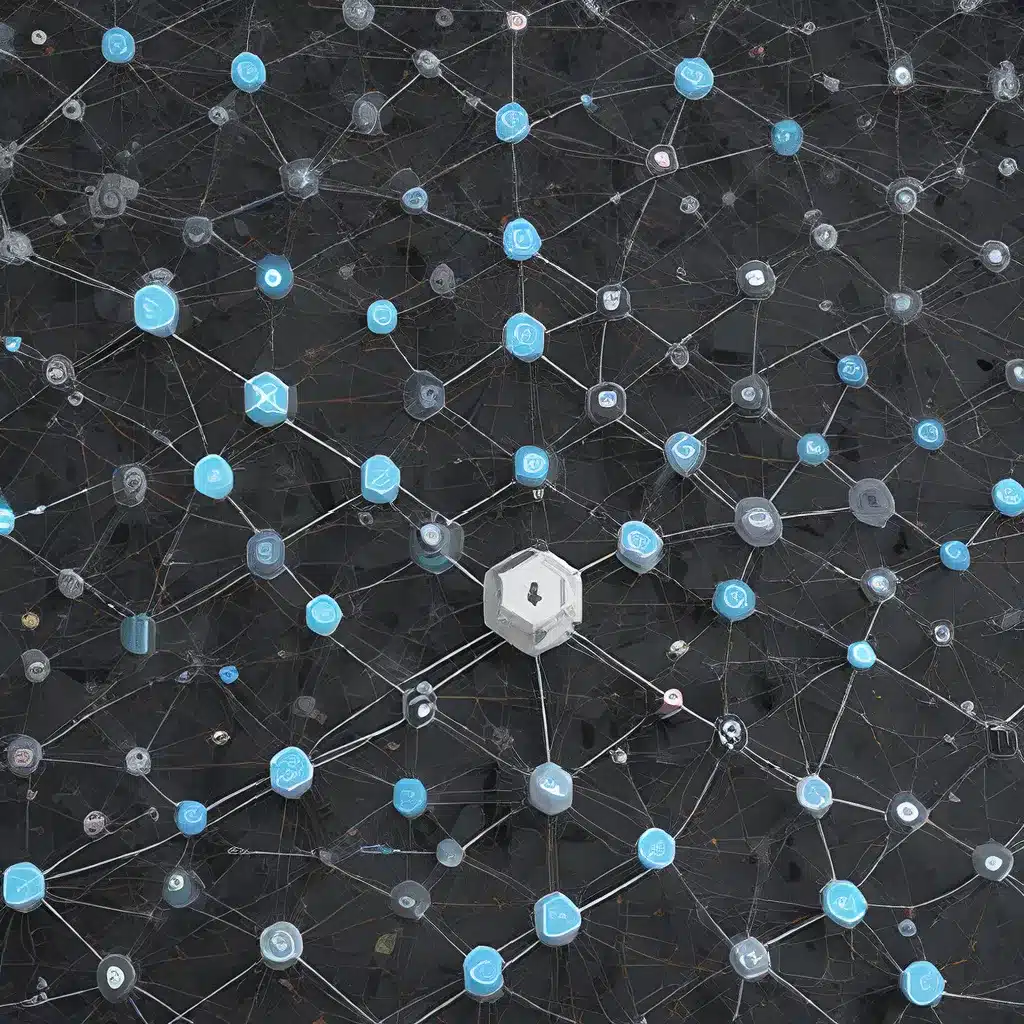
The Evolving Landscape of Sensor Networks and IoT
In the ever-expanding world of sensor networks and the Internet of Things (IoT), the ability for these systems to adapt and self-organize has become increasingly crucial. As the deployment of resource-constrained devices, including sensors and multi-agent systems, continues to proliferate across various industries, the need for efficient and resilient coordination mechanisms has grown exponentially.
One of the key challenges in this domain is distributed constraint satisfaction, where agents must find a set of assignments that satisfy all constraints among them. Traditional approaches have often fallen short, particularly in the face of dynamic, physical multi-agent systems that must operate in complex, real-world environments.
To address these challenges, researchers have explored the concept of k-resilient distribution of graph-structured computations, which aims to support agent decisions and maintain the integrity of the overall system. This has led to the development of innovative distributed algorithms and self-organizing techniques, such as the DRPMMGM-2 method, that can enhance the reliability and adaptability of sensor networks and IoT applications.
Distributed Algorithms for Self-Organization
At the heart of the autonomous sensor adaptation approach lies the notion of self-organization. By empowering sensor nodes and IoT devices with the ability to dynamically adjust their behavior and coordinate their actions, these systems can respond more effectively to changes in their environment, resource constraints, and evolving requirements.
One of the key strategies in this domain is the use of distributed algorithms. These algorithms enable multi-agent systems to make decisions and adapt their behavior without the need for centralized control or a single point of failure. This decentralized approach not only improves resilience but also scalability, as the system can more readily accommodate the addition or removal of sensor nodes and IoT devices.
The DRPMMGM-2 method, for example, is a replication-based self-organizing distributed repair algorithm that can help maintain the integrity of the system in the face of dynamic changes and failures. By strategically replicating and distributing computations across the network, this algorithm can ensure that agent decisions remain consistent and reliable, even when individual nodes or components experience disruptions.
Addressing Challenges in Sensor Network Design
Designing effective sensor networks and IoT systems involves navigating a complex landscape of technical and operational challenges. These include:
-
Scalability and Adaptability: As the number of sensor nodes and IoT devices continues to grow, the network must be able to scale efficiently without compromising performance or reliability. Self-organizing algorithms and distributed approaches play a crucial role in addressing this challenge.
-
Heterogeneity and Interoperability: Sensor networks and IoT ecosystems often comprise a diverse range of devices, platforms, and communication protocols. Ensuring seamless interoperability and integration is essential for enabling data exchange and collaborative decision-making.
-
Energy Efficiency: Many sensor nodes and IoT devices are powered by limited energy sources, such as batteries or energy-harvesting mechanisms. Designing energy-efficient algorithms and power management strategies is crucial for prolonging the operational lifetime of these systems.
-
Security and Privacy: The proliferation of sensor networks and IoT devices has also increased the attack surface for cybersecurity threats. Implementing robust security measures, including encryption, authentication, and access control, is critical for protecting sensitive data and safeguarding the integrity of the overall system.
-
Data Management and Analytics: Sensor networks and IoT systems generate vast amounts of data, which must be effectively collected, processed, and analyzed to extract meaningful insights and support informed decision-making.
Practical Applications of Sensor Networks and IoT
The advancements in sensor network design and distributed algorithms have enabled a wide range of practical applications across various industries, including:
-
Smart Cities: Sensor networks and IoT technologies are revolutionizing the way we manage and optimize urban infrastructure, from traffic management and environmental monitoring to waste management and energy distribution.
-
Industrial Automation: In the industrial sector, sensor networks and IoT are driving predictive maintenance, supply chain optimization, and quality control through real-time data analysis and autonomous decision-making.
-
Healthcare: In the healthcare domain, sensor networks and IoT are enabling remote patient monitoring, early disease detection, and personalized treatment by collecting and analyzing vital signs and other health-related data.
-
Agriculture and Environmental Monitoring: Sensor networks and IoT are transforming the way we manage precision agriculture, water conservation, and environmental preservation through real-time data collection and adaptive decision-making.
-
Transportation and Logistics: Sensor networks and IoT are revolutionizing fleet management, traffic optimization, and supply chain visibility by providing real-time tracking, predictive analytics, and autonomous decision-making.
These are just a few examples of the transformative impact that sensor networks and IoT are having on various industries, driven by the advancements in distributed algorithms and self-organizing capabilities.
The Future of Sensor Networks and IoT
As the sensor network and IoT landscape continues to evolve, we can expect to see even more ambitious and innovative applications emerge. The convergence of artificial intelligence, machine learning, and edge computing will further enhance the autonomy and decision-making capabilities of these systems, enabling them to adapt and respond to complex, dynamic environments with unprecedented efficiency and resilience.
Moreover, the integration of sensor networks with 5G and 6G technologies will unlock new opportunities for low-latency, high-bandwidth data transmission and real-time control of IoT devices. This, coupled with advancements in energy harvesting and power management, will pave the way for self-sustaining, ubiquitous sensor networks that can operate autonomously for extended periods, revolutionizing a wide range of industries and applications.
As we explore the frontiers of sensor network and IoT technologies, the importance of distributed algorithms and self-organizing capabilities cannot be overstated. These innovative approaches will continue to drive the adaptability, reliability, and scalability of these systems, ensuring that they remain at the forefront of technological innovation and enhance the way we interact with the physical and digital worlds around us.
To stay informed about the latest developments in the world of sensor networks and IoT, be sure to visit the Sensor Networks organization website, where you can find a wealth of resources, insights, and community engagement opportunities.